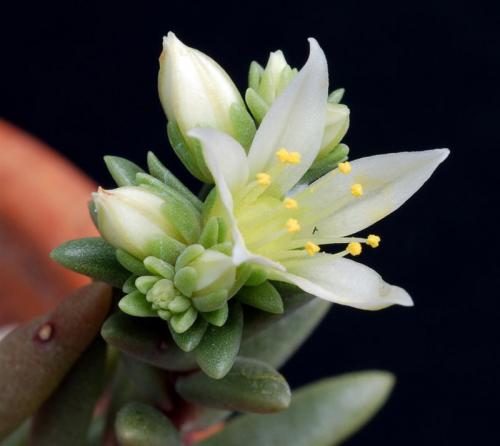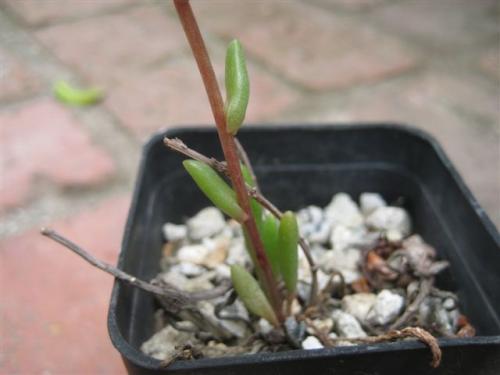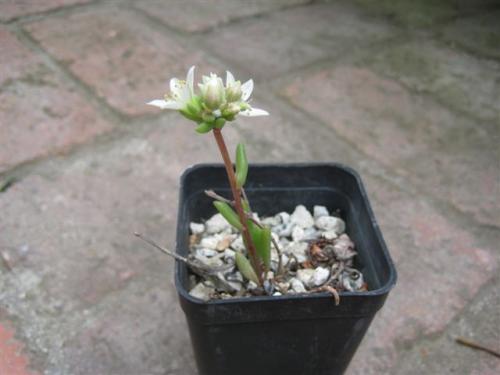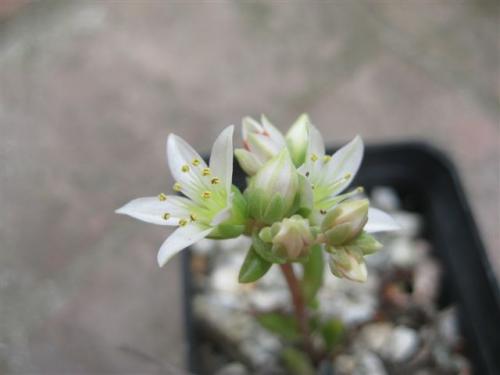NESIOTICA (Moran) Moran, 1953
Synonym : Hasseanthus nesioticus Moran (1950)
Subgenus Hasseanthus
Distribution : USA (California: Santa Cruz Island); coastal rocks, to 50 m, rare.
Description (according to J. Thiede in IHSP, 2003):
Stems ± globose, 1 - 2 (-3) x 0.7 - 1.5 (-2) cm.
Rosettes with 8 - 16 leaves.
Leaves oblanceolate to spatulate, acute to obtuse, 2.5 - 3.5 (-5) x 0.5 - 1.5 (-2.5) (basally 1.2) cm, 2 - 5 mm thick, vernal.
Inflorescence scape 3 – 7 (-10) cm; inflorescence usually with 2 simple scorpioid branches with 3 - 8 flowers, pedicels 1 - 2 mm.
Flowers with musk-Iike scent, calyx 4 - 6 mm, sepals triangular-ovate, 3 – 4 mm, petals elliptic, acute, ± erect to ascending-divaricate, 7 - 14 x 3.5 - 5.5 mm, white, basally and along the keel yellowish-green, tube 1 - 2 mm, anthers yellow or orange.
Cytology : n = 34
According to Moran (1978b), Moran (1978c) and Nakai (1983), this could represent an intersubgeneric hybrid between subgenus Hasseanthus (D. blochmaniae) and subgenus Dudleya, and this is also indicated especially by the broader and more erect petals as well as by the more erect carpels.

Plant from Santa Cruz Island, (from plant collected with permits by Santa Barbara BG) US threatened species:



Photos Michael Wisnev.